Video of the Week:
Overwintering Geraniums
Kansas Forest Service Seedling Available Now
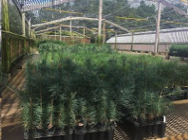
The conservation team is working to provide a greater variety of seedlings that are adapted to Kansas conditions. The cost is $50 for 25 seedlings, plus shipping and sales tax. Customers are also welcome to pick up the seedlings at the KFS Manhattan office at 2610 Claflin Road. Seedlings must be used for conservation purposes such as windbreaks, wildlife habitats, riparian plantings, wood lots, and Christmas trees.
It’s always best to plant seedlings as soon as they are received, but with proper care, they can be held for several weeks. The seedlings can be stored upright in light shade protected from the wind, with the root plug saturated with water three times a week. Do not store the seedlings on the ground as the roots will quickly grow into the soil.
After seedlings have been planted, water them in. The amount and frequency of watering will vary depending on the soil type, wind velocity, and temperature. Irrigate by saturating the root zone, then letting it partially dry out as this will promote soil aeration and root growth. Seedlings will need watering assistance for up to three years. After three years, seedlings should be adapted to your soil and self-sustaining.
If a fall planting isn’t on your mind, or you aren’t prepared yet, spring planting is on the horizon, and now is a good time for site preparation. Site preparation is critical to the survival of tree and shrub seedlings. Any other vegetation is competition for moisture and nutrients from the seedling. The preparation done before a planting and care after a planting will help to ensure successful establishment of seedlings.
Spring conservation tree sales will open on Dec. 5, 2016 and run through May 1, 2017. To order online, visit the Kansas Forest Service website: www.Kansasforests.org and click on “Conservation Trees.” For questions, or to order by phone, call 1-888-740-8733. (From News Release)
Vegetables:
Last Tomatoes of the Season
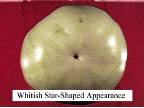
When harvesting fruit before a frost, separate tomatoes into three groups for storage: those that are mostly red, those that are just starting to turn, and those that are still green. Discard tomatoes with defects such as rots or breaks in the skin. Place the tomatoes on cardboard trays or cartons but use layers of newspaper to separate fruit if stacked. Occasionally a tomato may start to rot and leak juice. The newspaper will keep the juice from contacting nearby or underlying fruit. Store groups of tomatoes at as close to 55 degrees as possible until needed. (Ward Upham)
Fall Planting of Asparagus and Rhubarb
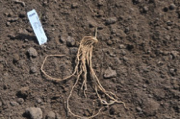
Prepare the soil and fertilize as you would in the spring. See http://www.bookstore.ksre.ksu.edu/pubs/mf319.pdf for more detail on asparagus and http://www.bookstore.ksre.ksu.edu/pubs/ep99.pdf for more information on rhubarb.
Water well after planting to ensure good root/soil contact. Mulching would be helpful on the rhubarb to prevent the plant from heaving out of the soil during the winter but asparagus requires no such treatment as it is planted much deeper. (Ward Upham)
Peppers from the Garden
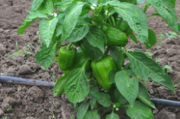
Turfgrass:
Should You Let Your Turf Grow Tall in the Fall?
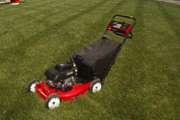
Turfgrass species vary genetically in their cold tolerance, with warm-season grasses such as bermudagrass, zoysiagrass and buffalograss being less cold tolerant than the cool-season types such as tall fescue and Kentucky bluegrass. Given these differences, cold tolerance is improved by increasing the health of the plants going into the winter, and healthy plants are a result of a sound management program (fertilizing, watering and mowing) during the spring, summer and fall.
The lawn will benefit more from continuing to mow at the recommended height than from trying
to gain some insulation against winter cold by allowing it to grow tall.
Here is a list of the recommended mowing height ranges (in inches) for home lawns in Kansas:
Tall fescue 2.5 -3.5
Kentucky bluegrass 2-3
Buffalograss 2-3
Bermudagrass 1-2
Zoysiagrass 1-2
(Note: Mowing at heights below 1.5 inches requires a reel mower).
There may be some benefits gained by adjusting mowing heights WITHIN the recommended range at times. For example, it is a good practice to mow warm-season grasses at the higher end of recommended heights during late summer and early fall because this practice should help them store more carbohydrate reserves for the winter, and it may reduce the incidence of certain cool-weather diseases. But the rule to remember is to stay within the recommended height range for your species. (Ward Upham)
Frost on Lawns
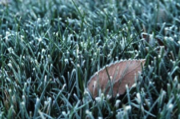
Contributors: Ward Upham, Extension Associate
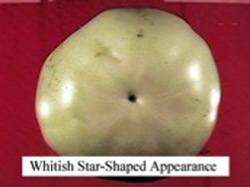
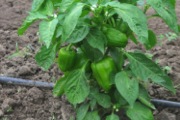


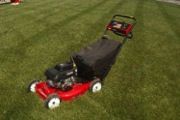


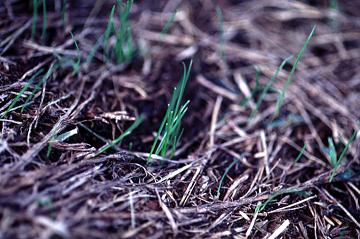
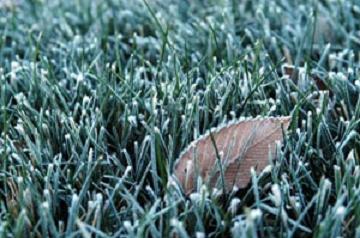
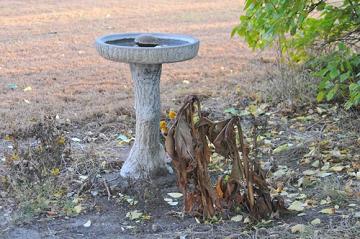
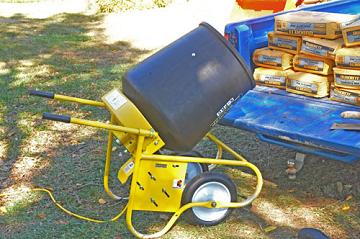

 RSS Feed
RSS Feed
